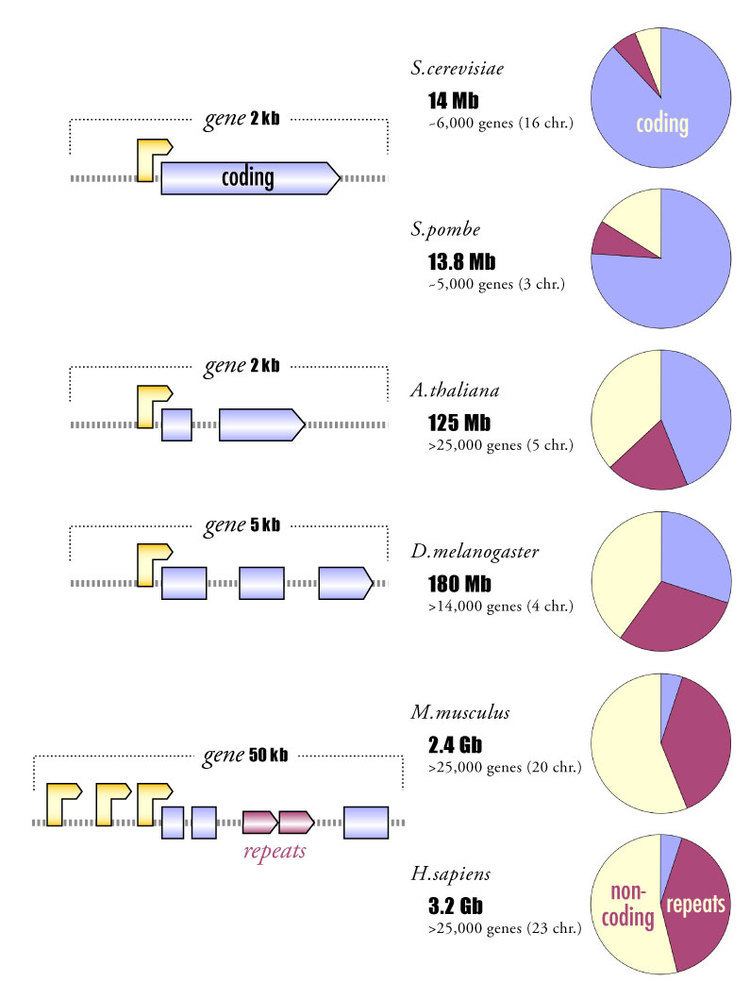 | ||
The hereditary material i.e. DNA(deoxyribonuclic acid) of an organism is composed of an array of arrangement of four nucleotides in a specific pattern. These nucleotides present an inherent information as a function of their order. The genome of all organisms (except some viruses and prions) is composed of one to multiple number of these DNA molecules. To draw an analogy it can be said that genome when seen from viewpoint of sequences of these nucleotides alone, is like a book which doesn't have any chapters or paragraphs or even sentences. Hence, these nucleotides conceal a layer of unapparent information. Genomic organisation of an organism is this background layer of information which unassumingly provides multiple layer of information to structure genome from the array of nucleotide sequences.
Description
Organisms have a vast array of ways in which their respective genomes are organized. A comparison of the genomic organization of six major model organisms shows size expansion with the increase of complexity of the organism. There is a more than 300-fold difference between the genome sizes of yeast and mammals, but only a modest 4- to 5-fold increase in overall gene number (see the figure on the right). However, the ratio of coding to noncoding and repetitive sequences is indicative of the complexity of the genome: The largely "open" genomes of unicellular fungi have relatively little noncoding DNA compared with the highly heterochromatic genomes of multicellular organisms.
In particular, mammals have accumulated considerable repetitive elements and noncoding regions, which account for the majority of their DNA sequences (52% non-coding and 44% repetitive DNA). Only 1.2% of the mammalian genome thus encodes for protein function. This massive expansion of repetitive and noncoding sequences in multicellular organisms is most likely due to the incorporation of invasive elements, such as DNA transposons, retrotransposons, and other repetitive elements. The expansion of repetitive elements (such as Alu sequences) has even infiltrated the transcriptional units of the mammalian genome. This results in transcription units that are frequently much larger (30-200 kb), commonly containing multiple promoters and DNA repeats within untranslated introns.
The vast expansion of the genome with noncoding and repetitive DNA in higher eukaryotes implies more extensive epigenetic silencing mechanisms. Studies of the genomic organization is thought to be the future of genomic medicine, which will provide the opportunity for personalized prognoses in clinics.
